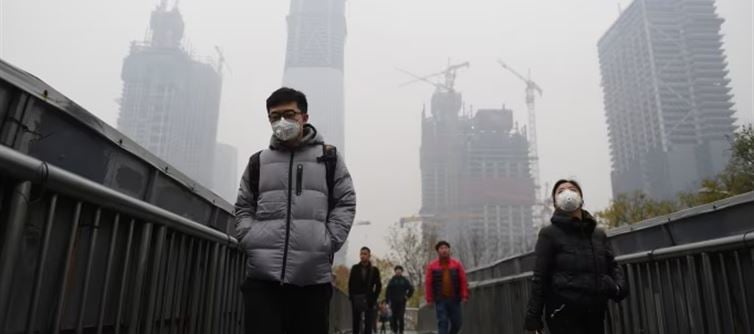
The City That Choked, Then Chose To Breathe
In 2014, stepping outside in beijing felt like inhaling death — smog thick as soup, skies gray for weeks, and masks worn long before COVID. Fast forward to 2025, and the transformation is jaw-dropping. Beijing’s skies are blue. Its air is clean. Its people are breathing easy.
Meanwhile, in delhi, the air has turned toxic again. Schools shut, flights diverted, and citizens gasping. beijing found the cure. delhi keeps repeating the disease.
This is not just a story of air — it’s a story of political will vs political noise, of science vs superstition, of a government that acted like it meant business and another that keeps forming “task forces” every November.
1. The Year beijing Decided It Had Had Enough
2014 was Beijing’s breaking point — the world’s most polluted city, suffocating in its own industrial fumes. The Communist party saw it not as a PR issue but a survival one.
Billions were pumped into pollution control. Factories were told to clean up or close. Coal power plants were dismantled brick by brick. The city banned half its cars on certain days. It wasn’t pretty — but it worked.
Between 2013 and 2022, beijing cut its PM2.5 by 60%. By 2025, its AQI hovers around 70 — cleaner than cities like london on bad days.
2. Money, Muscle, and Monitoring: The beijing Blueprint
beijing didn’t “hope” pollution would go away. It brought clean air.
In 2013, its pollution control budget was $430 million. By 2017, it hit $2.6 billion — and it stayed there.
That money built the backbone of China’s clean-air revolution:
• Industrial scrubbers and filters are in every plant.
• Gas-based heating is replacing coal furnaces.
• AI-driven air monitoring at dozens of citywide stations.
And when the air still misbehaved, they even seeded clouds to wash it down.
No city on Earth has spent or enforced at this scale. And that’s the difference — beijing treated smog like a national security threat.
3. From Coal Smoke to Solar Fields
china flipped the script on energy. Within a decade, beijing moved from coal-based electricity to natural gas and renewables.
Entire coal plants were demolished and replaced by clean energy grids. Rural heating — one of the dirtiest contributors — was overhauled under the “Coal-to-Gas” program.
By 2025, over half of Beijing’s winter heating will come from gas and renewables.
Meanwhile, india still burns paddy residue and diesel generators to stay warm.
4. Cars, Codes, and Control
While delhi argues about odd-even car rules, beijing enforced them like gospel.
Vehicles were overhauled, emission norms tightened, and polluting trucks banned from entering the city during peak hours.
Public transport became cleaner — cng and electric buses took over.
And yes, people obeyed, because in china, “please comply” isn’t a suggestion — it’s law.
5. The Power of One Voice
Beijing’s secret weapon wasn’t technology — it was unity of command.
When china decided to clean its air, every province around beijing — Tianjin, Hebei — was ordered to fall in line.
Factories 200 kilometers away that contributed to Beijing’s smog were shut or relocated.
Regional action plans were drawn and executed in months, not decades.
In India? punjab burns crops, haryana blames punjab, delhi blames both — and everyone blames the weather.
6. Why delhi Can’t (Or Won’t) Breathe Clean
India’s story is the perfect opposite — a case study in chaos.
• Federal friction: State vs Centre bickering kills coordination.
• Underfunded measures: Delhi’s anti-pollution budget can’t match Beijing’s monthly spend.
• Agricultural apathy: Farmers still burn fields because clean alternatives aren’t subsidized.
• Urban mess: Unregulated construction, dust, traffic, and firecrackers add fuel to the fire — literally.
• Public defiance: Every ban — on crackers, on cars, on construction — meets with outrage, memes, and court petitions.
delhi doesn’t lack awareness. It lacks discipline and political spine.
7. The Democracy Dilemma
China’s authoritarian control allowed rapid, ruthless enforcement — no debate, no delay.
India’s democracy, while noble in spirit, gets tangled in red tape and public outcry.
Every solution — from stubble bans to vehicle policies — becomes a political football.
In beijing, people feared the state. In delhi, the state fears losing votes.
8. The Numbers Don’t Lie
• beijing (2025): AQI ~70 (Moderate)
• delhi (2025 Winter): AQI ~450–800 (Hazardous)
• PM2.5 reduction in beijing (2013-2022): ~60%
• PM2.5 reduction in delhi (same period): Barely 10%
beijing moved from “world’s worst” to “model city.” delhi moved from “bad” to “unlivable.”
9. Lessons From the Dragon
Beijing’s success wasn’t a miracle — it was a method:
• Money: Billions invested, consistently.
• Monitoring: Real-time data driving real-time policy.
• Mandates: Enforced laws, not advisory notices.
• Mindset: A belief that clean air is non-negotiable.
If india adopted even half that discipline, the skies could clear in five years.
10. The Bottom Line: One Chose To Breathe. The Other Chose Excuses.
Beijing’s blue skies are proof that change is possible — if the government acts, if the people comply, and if the nation treats clean air as a birthright, not a luxury.
delhi doesn’t need new slogans or fancy cloud-seeding experiments. It needs political will, regional unity, and societal honesty.
Until then, every November, delhi will keep choking — while beijing looks up and sees the stars again.




 click and follow Indiaherald WhatsApp channel
click and follow Indiaherald WhatsApp channel